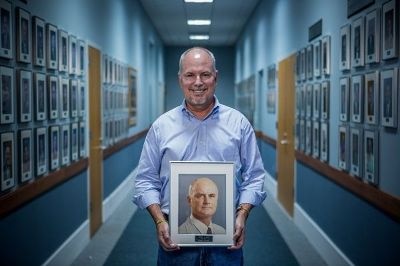Preserving the Everglades for Future Generations
Growing up on the southwest coast of Florida in the town of Naples, the Everglades was practically my backyard. My father used to take me there fishing, and I have fond memories of being out on the boat with him, waiting for the fish to bite, and of all the wildlife we would encounter. It was a beautiful wilderness, yet at the time I had no idea how delicate this ecosystem was, or that the Everglades had already lost half its original expanse and was in danger of disappearing.
Since the 1970s, the South Florida Water Management District has worked to protect the Everglades by funding and implementing a wide variety of restoration programs. In my role at Citi, I've helped this government agency obtain financing for several of its most important projects.
Approximately 20 years ago, engineers and scientists at the South Florida Water Management District began work on a new "green technology" called Stormwater Treatment Areas (STAs) to improve water quality and help restore the Everglades. STAs are large, specially constructed marshes that use aquatic plants to remove and store excess nutrients (phosphorus) found in urban and farm stormwater runoff. In high amounts, phosphorus harms the Everglades ecosystem. Natural plant processes in the STAs are highly effective in cleansing the water before it is sent south and into the Everglades.
Large capital projects like these are very expensive. The South Florida Water Management District would have had to wait many years to bring the five STAs, now totaling more than 57,000 acres, online based on its annual tax revenue. By then, more environmental damage could occur. In addition, rising construction costs and land prices may have certainly reduced what South Florida Water Management District could have otherwise accomplished if it had a more immediate source of capital.
This was a moment when my personal passions intersected with my career, and, together with my team at Citi, I started looking at what we could do.
We ended up using a revenue bond financing program that, until then, had been used mainly by government agencies to build schools. We adapted it for Everglades restoration. This was the first time this program, called Certificates of Participation (COPs), had been used for any environmental restoration project.
The offering received AA ratings — the highest rating for bonds of this type in Florida — and raised $550 million for the agency. Citi even won a national award for pioneering a new environmental financing method. And, the South Florida Water Management District was able to receive these funds in months, not years, ensuring they could put the money to work quickly on what is one of the largest environmental restoration projects in the world.
And now? Thousands of acres of STA wetlands clean water before it enters the Everglades. It takes two weeks for water to flow slowly through the STAs, and by then it contains less phosphorus than even bottled water. Native plants and animals are returning. And the STAs themselves, because of their marsh environment, have ended up creating excellent habitats for wading birds.
In my nearly 30 years with Citi, this project stands out over all of them for me: being able to bring together my colleagues and use our banking expertise to accelerate a remarkable program, one that just may end up saving the place where I spent many childhood days fishing with my father. I'm so proud that because of our efforts in support of our client, today's and tomorrow's children will be able to experience the Everglades I know and love.

Michael, holding a photo of his father, which hangs in the hallway of the South Florida Water Management District, where he served on the board of directors.
